Yesterday morning Falkor departed Apra Harbor, heading out to sea to embark on a month of sea trials with Schmidt Ocean Institute’s brand new ROV SuBastian. Integrating a Remotely Operated Vehicle (ROV) onto a research vessel is not an easy process; you cannot just drop it on board and call it a day.
Both the vehicle and the ship need to be able to talk to each other, small changes need to be made to Falkor to ensure that she can safely deploy and recover the vehicle, and the crew needs to be trained on how to use the vehicle, including understanding safety measures and knowing how to launch and recover. Since arriving in Guam on Day One, the ROV engineering team has been putting in the work to get the brand new vehicle ready to go.
Step 1. Mobilization
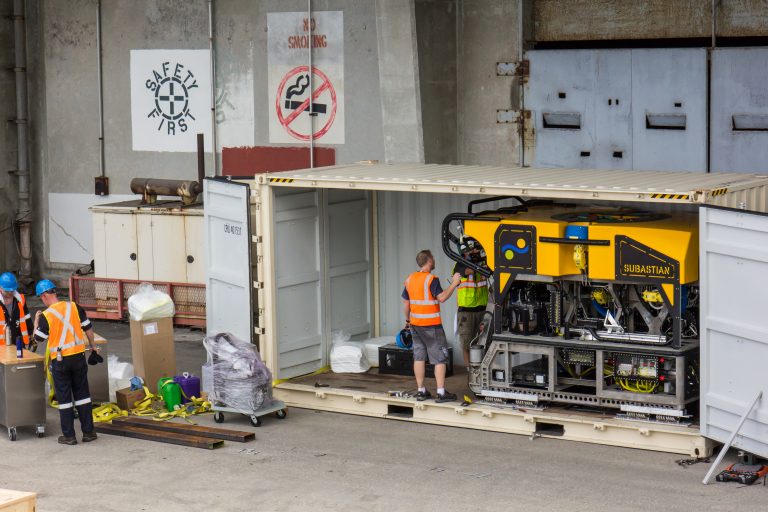
The first challenge was getting the 6500 lb. vehicle onto Falkor. Shipped to Guam from Hayward, California, the container was opened up port-side by the team, revealing the ROV’s bright yellow body.SuBastian was carefully removed with a lift, then craned onto the aft deck of Falkor. Several additional items were delivered in tandem with SuBastian, including the container van (which houses the main control system that links the vehicle to the ship), the blue metal docking head that helps to launch and recover SuBastian in the water, as well a custom designed 6000m capacity winch. Along with these big-ticket items came crates of supplies, back-up parts, and a very sweaty team of engineers in navy jumpsuits.
Step 2. Integration
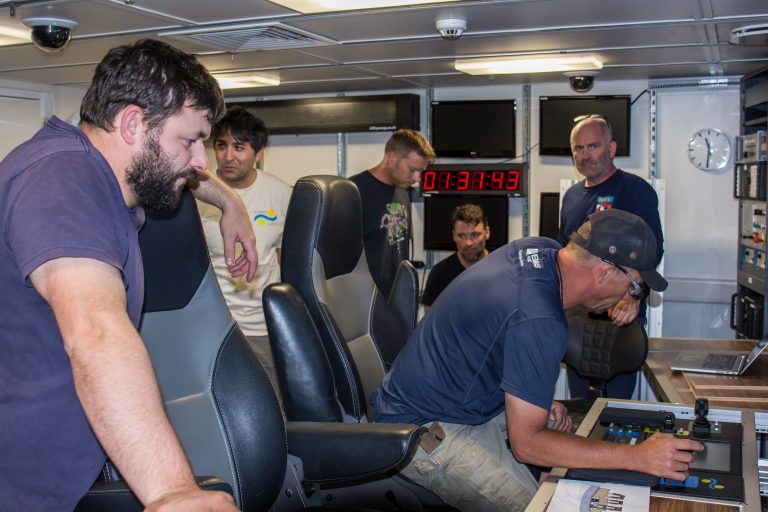
The next step is integrating the vehicle to the ship. The engineers have been working on making sure the new winch (the device that reels out the umbilical cable) can support the heavy load, as well as installing the ROV consoles into the science control room. This is where the pilots will drive and monitor the vehicle during the dives. Getting the docking head set up required the team to “terminate the umbilical,” the communication cord that connects SuBastian to the ship. Watching the team carefully cut the five wires to be put into the docking head was truly an impressive display. So much precision and caution needs to be taken in order to do it correctly. At the same time, mechanical engineers combed through SuBastian to ensure that all its parts worked and nothing got damaged during the transit.
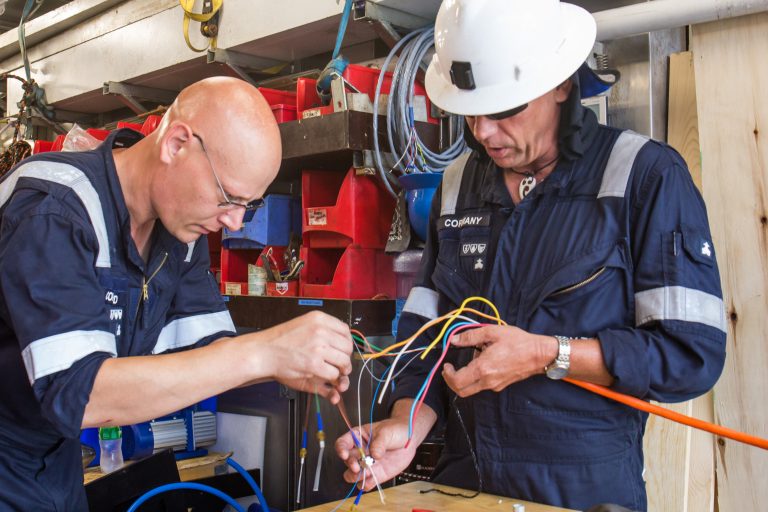
Step 3. Training
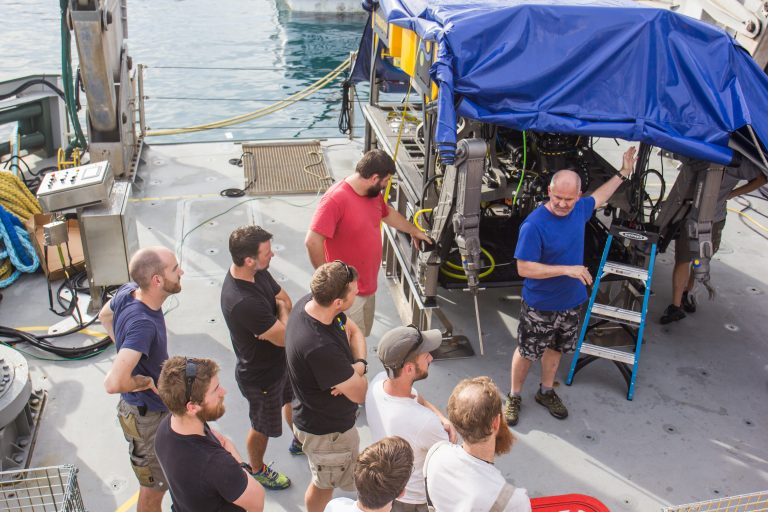
Since all of this is new to the team, the Falkor crew and ROV engineers need to learn how to operate the equipment. A three day winch training was held, so that selected individuals know how to operate and maintain the new system. Several other trainings were also given, including how to safely deploy SuBastian on and off the back deck, and creating written documentation of all the trials and tweaks completed. Having documentation of all the procedures, parts, and maintenance plans ensures that everyone on board knows how to use the vehicle.
Step 4. Troubleshooting
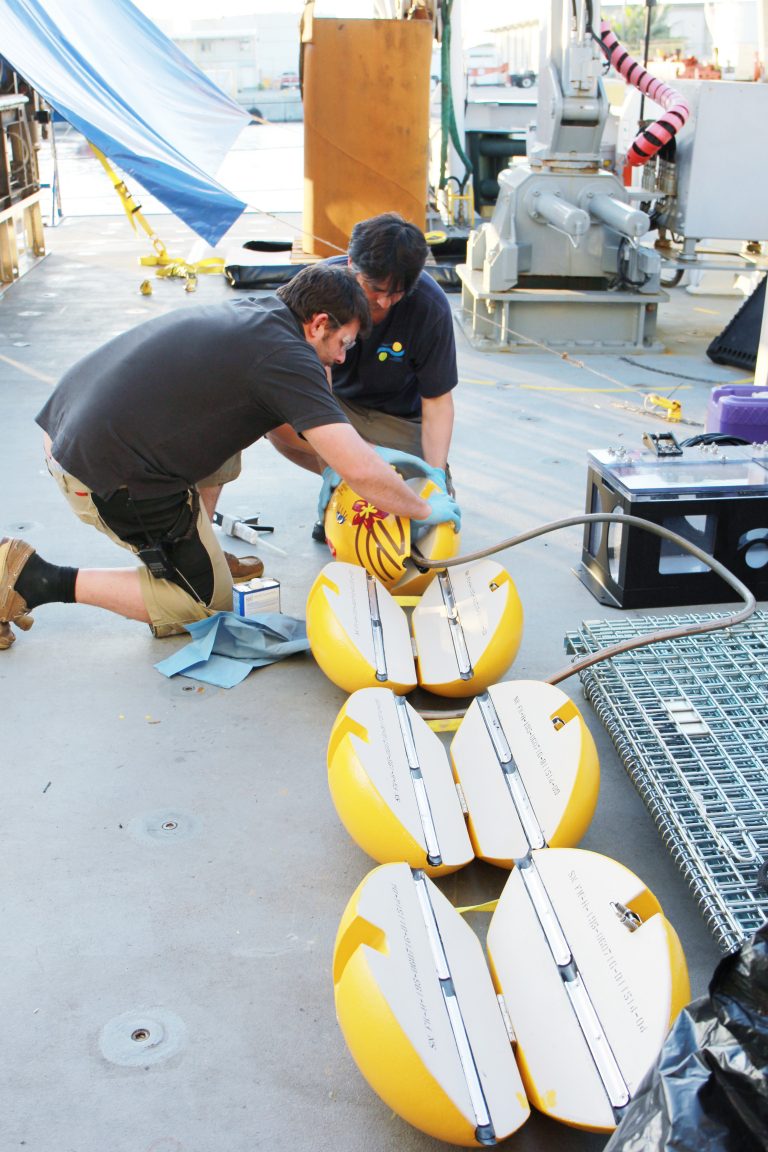
Integrating a new vehicle will never go perfectly, and there always are problems that need to be worked through. Just getting all the moving parts shipped and together by a certain date requires weeks of manpower and logistics planning. Countless tiny wires power the vehicle via electrical connections that meet through seven different junction boxes. Working on SuBastian’s electrical system requires draining the silicon oil from the junction boxes and pulling out the vehicle’s two 1-atmosphere pressure cans at the back. Splicing, connecting, and terminating all the tiny wires in these tight spaces requires light hands and delicate work. Luckily, Lead Electrical Engineer Nic Bingham works swiftly and precisely to address these issues. Another large project was outfitting the umbilical floats with rubber inserts so that the cable would fit in the channel. The marine technicians came together to assist with insulating the inside of the floats with the rubber to provide a tighter fit for the umbilical cable.
Step 5. Communication
With so many things happening all at once (and an impressively fast timeline), the team has communicated well and assisted each other to get things done. Every morning, Lead ROV Manager David Wotherspoon pulls the ROV engineering team and Falkor crew into the library to discuss what was accomplished the day before and go over what needs to still be done. Lead Mechanical Engineer Jason Williams updates the ROV garage checklist, constantly revising and updating tasks. The hard work from everyone has successfully brought us to the point of being ready to test SuBastian. In the last two days, the team has been able to practice lifting the vehicle on the aft deck, and even took the ROV for a quick dip while in port. Now that SuBastian has gotten a taste of salt water in the harbor, it is time to see what it is really capable of and go out to sea.
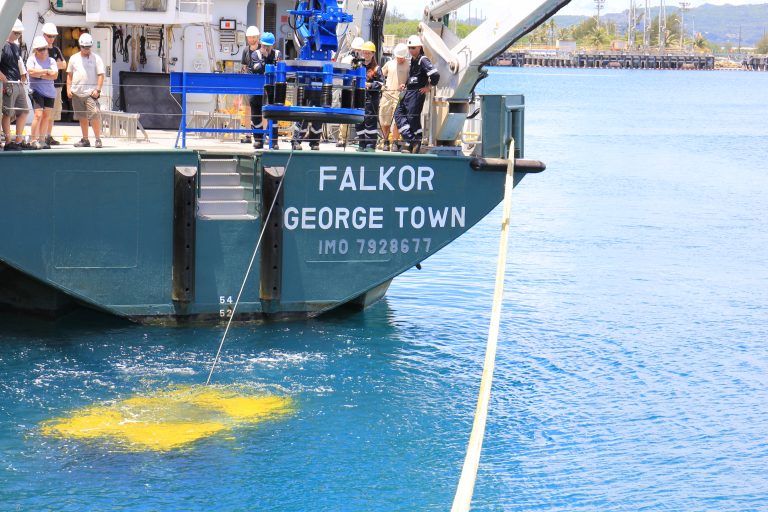
We are currently at our first location, where Lead Marine Technician Leighton Rolley multibeam is mapping the area to provide a better understanding of the terrain. The team will spend one day unspooling the umbilical cable off of the winch with a clump weight to ensure nothing is tangled and that the cable will successfully support ROV SuBastian. This will be done twice over the course of a day, followed by the first dive with SuBastian to 700 m.
The tense anticipation before each milestone can be felt amongst the team, but there is a quiet confidence that exudes from pride and trust with a group of people who have truly come together and created something magnificent in just under a year. It has been an honor to watch the action unfold and to document life being born into Falkor’s next generation of science tools.

